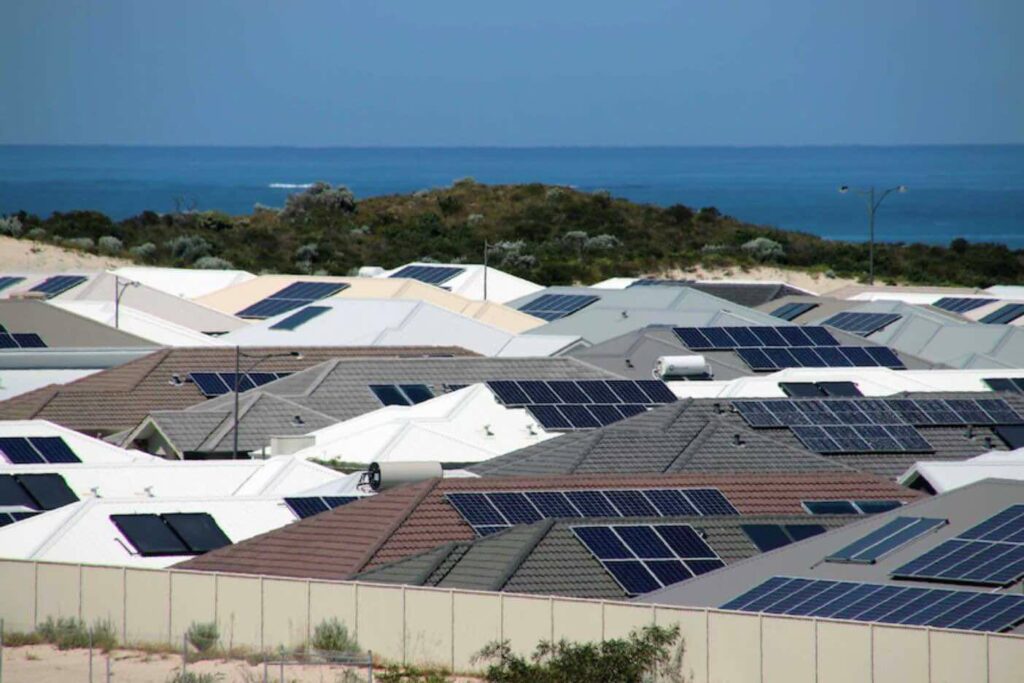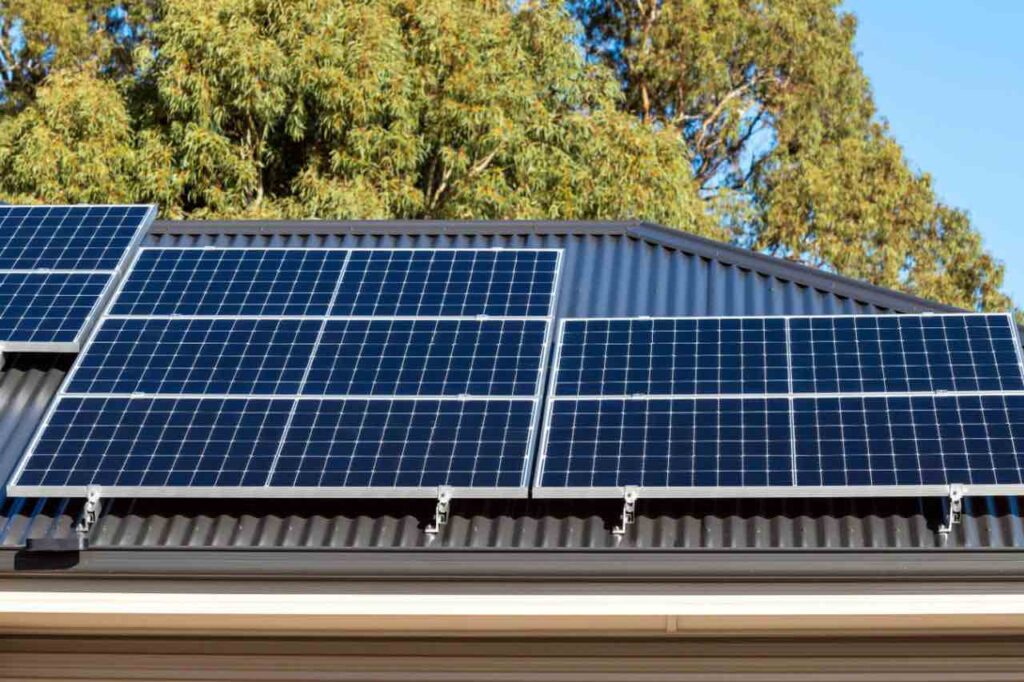Last update July 10th, 2024 at 05:54 pm
Choosing what size solar system is right for you is an important consideration. Solar panel systems come in several different sizes. It can be difficult to know which is the best for your household. The size of a solar panel is measured in kW (kilowatts). Each kW will be able to produce around 3.5kWh of electricity a day.
There are several factors to consider when determining what size your solar system should be. Here we will explain everything you need to know!

Different size solar systems and number of panels
There is a solar panel system for everyone, based on their electricity needs. On the Australian solar panel market, you will typically be able to choose between these standard sizes:
- 2 kW
- 4 kW
- 5 kW
- 6.6 kW
- 8 kW
- 10 kW
For a small-size solar system like a 2kW solar system, you will need 6 panels on your rooftop. This is because each panel has a capacity of around 370 W. If the size of your solar system is 6.6kW, this would equal 18 panels, and so on.
How to calculate your solar system size?
If you know your average electricity usage per day, you can calculate the optimal size solar system. This is done by dividing the number by 3.5.
Solar panel size = Average daily power usage / 3.5
You might recognize the number 3.5. We use this number because one kW of solar panel capacity will generate 3.5 kWh a day. This is the average in Australia.
For instance, if your daily electricity consumption is 20kWh. You should consider buying a solar panel system of around 6kW (20/3.5 = 5.7).

What size solar system is the most popular in Australia?
The average Australian household will typically install a 6.6kW size solar system. This will generate around 23 kWh of electricity every day. Throughout one day, the average household will consume around 18 kWh of electricity.
Will the solar panel cover all my electricity needs?
A 6.6kW size solar system should produce enough power to cover the average household need of 18 kWh. This doesn’t mean that all your needs are covered.
Most people are not home during the day. This is when the sun is at its highest and the solar panels are producing the most electricity. However, you may store power in batteries and use it during the night or when the panels produce less power.
The excess power you produce during the day is valuable. With a grid connect system you will receive payment from your power provider in form of a feed-in tariff.
Either way, you can be sure that you will cut your electricity bill significantly, as you will not have to buy as much power as you used to.
What size system do I need?
When you plan to buy a solar panel system, it is important to invest in the system size that is most suitable for your household. Here are some key factors that everyone should consider when choosing their solar system :
1. Power usage
When it comes to electricity usage, you can simply get an overview by looking at your most recent electricity bills. Your power provider will give you this information. It appears as “daily usage” and the amount is measured in kWh.
Although you can roughly calculate what size your system should be by dividing the daily electricity usage by 3.5, there are also some other factors that may affect what size you will actually need.
2. Hours of sunlight per day
You should also consider how many hours of sunlight will hit the roof. Remember that a solar panel is producing electricity when exposed to sunshine.
Shade created by trees or other structures means you will need a bigger system. A bigger system in the shade will produce the same amount of power as a smaller system on a sunny roof.
3. Roof space and orientation
The number of solar panels will be of importance when it comes to daily power output. But you should also be aware that the roof needs to be of a certain size to give room for a specific number of panels. The roof must be oriented towards the midday sun.
If you have only a small part of your roof oriented towards the sun, this may give limitations when it comes to system size.
Find the right solar system for you
If you are planning on going solar, you will be able to choose between a number of different solar system sizes. Although a 6.6kW system is the most popular in Australia, this is not necessarily the best choice for you.
Consider your daily power usage, sun conditions on the property and roof space/orientation, and find the best solar system size for your particular household. Getting a quote from a CEC-accredited installer is a great place to start your solar journey.